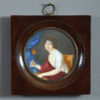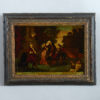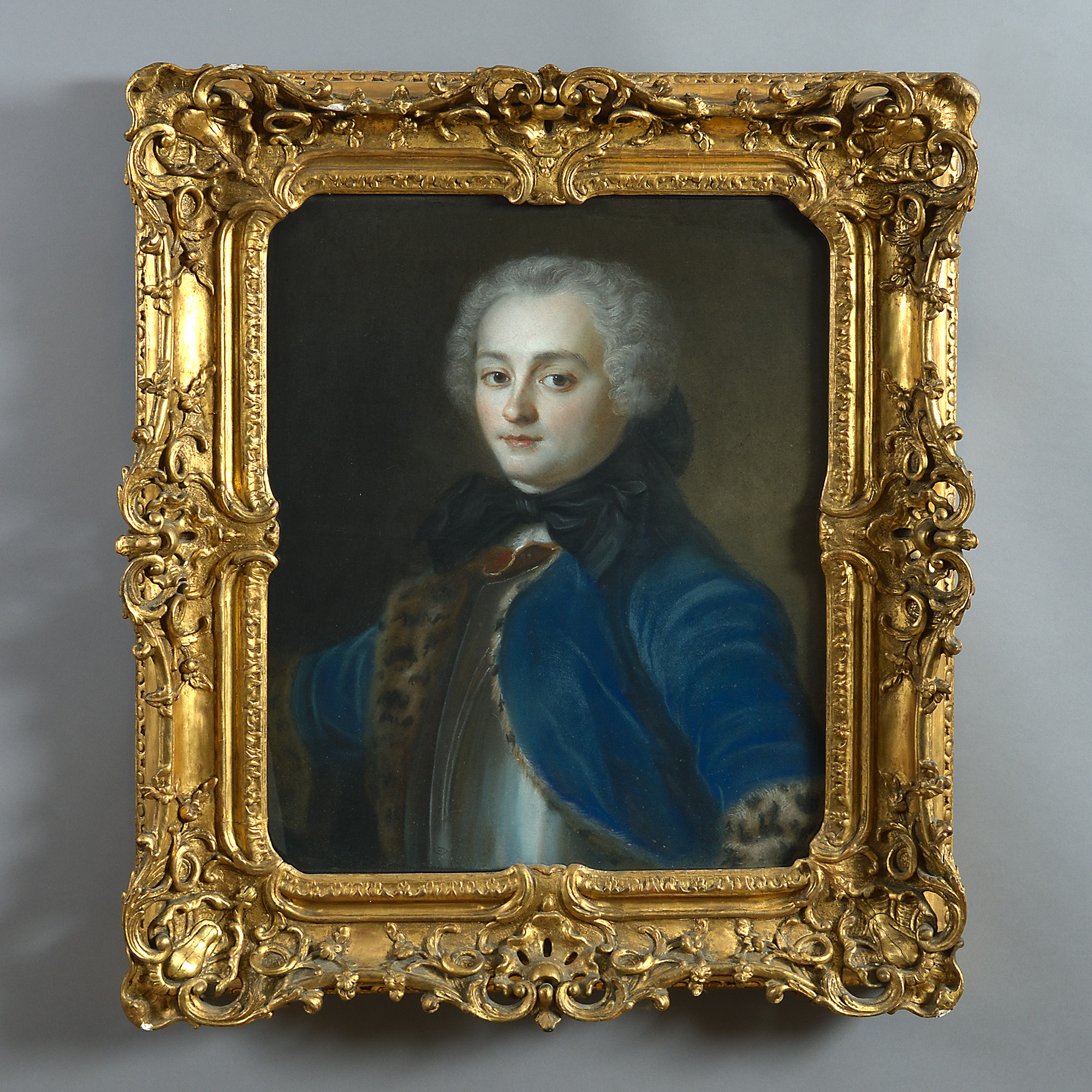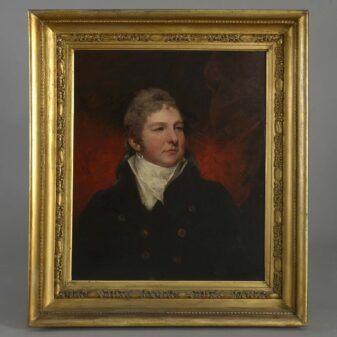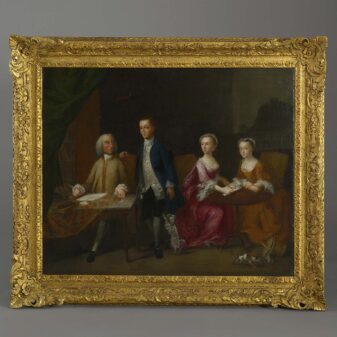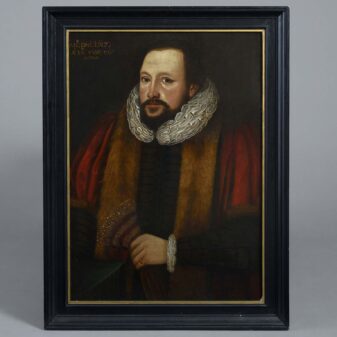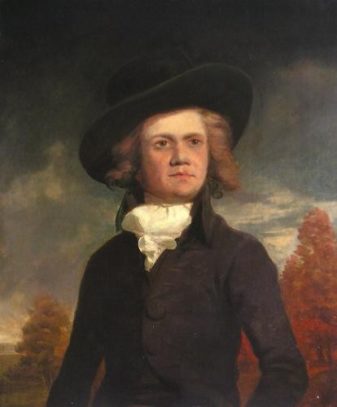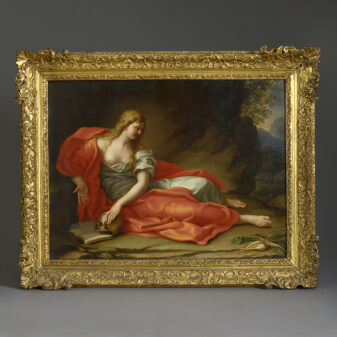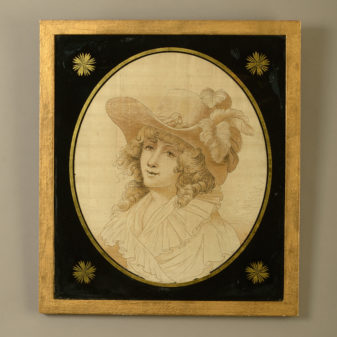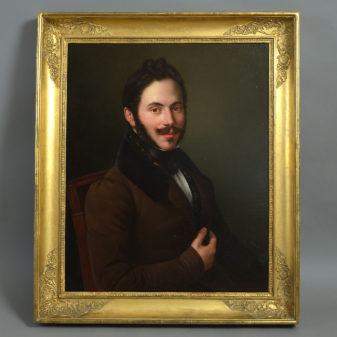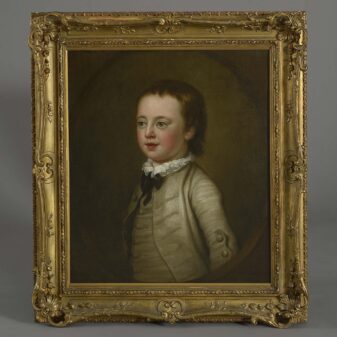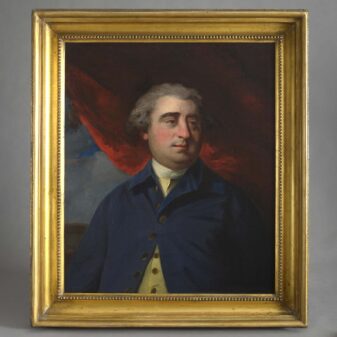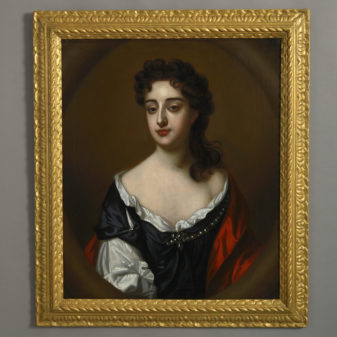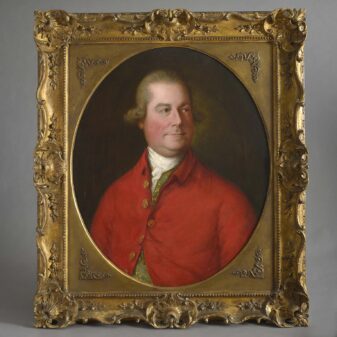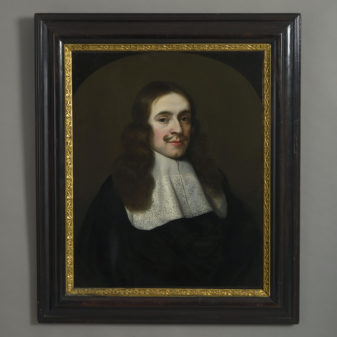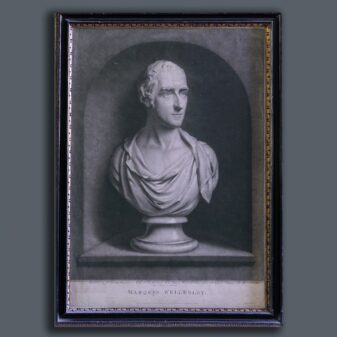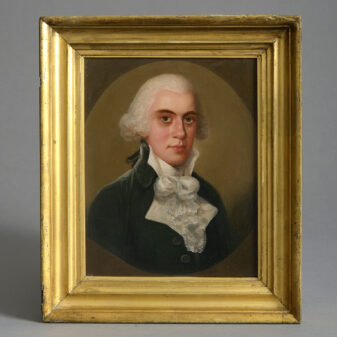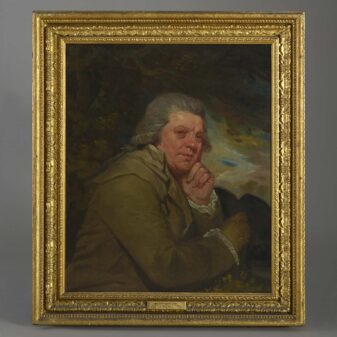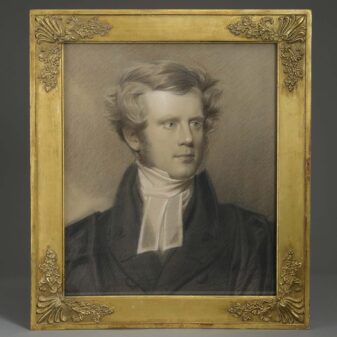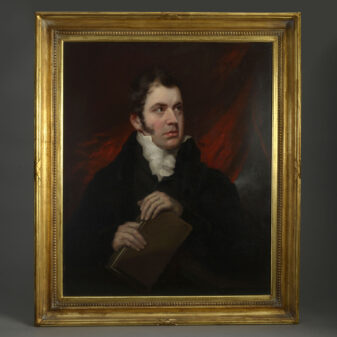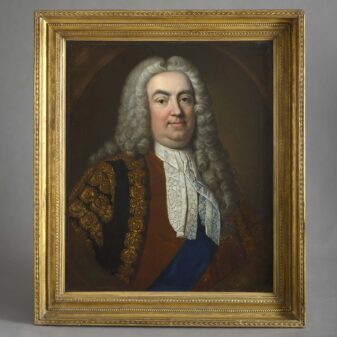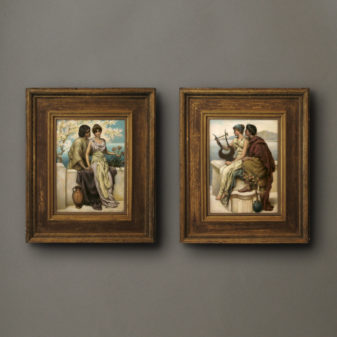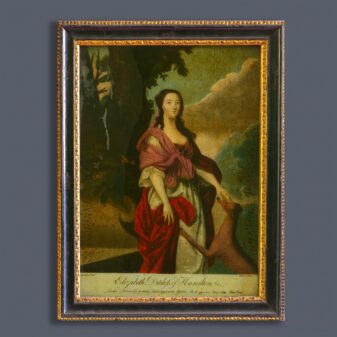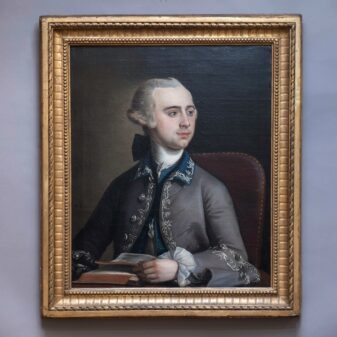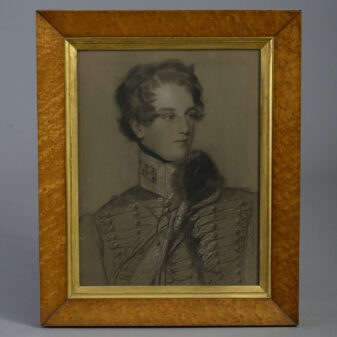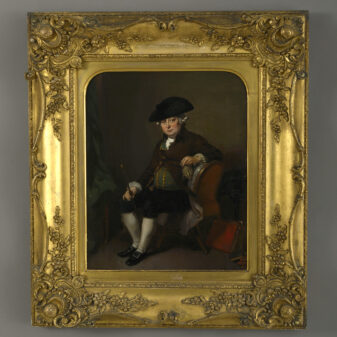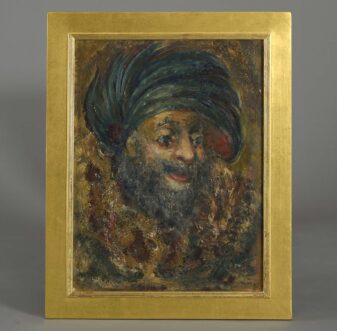Circa 1760 France
An 18th Century Portrait of a Gentleman
£6,900
SOLD
Height 32 1/2 inches (82.55 cm)
Width 28 inches (71.12 cm)
Dimensions refer to size of frame.
French School, 18th century – Portrait of a Gentleman
A pastel on paper card, backed; held in a Louis XV carved giltwood frame
Provenance: The Reynolds Galleries, London; Mrs. Eric Hambro (nee Sibyl Smith) 1895 – as per label reverse – wife of Sir Charles Eric Hambro, banker and Conservative politician (1872-1947). Wealthy collectors, they divorced in 1929 and she died in 1942.
Pastels were first recorded in art during the Renaissance Period, initially to finish off paintings and to highlight certain areas, but became a popular substitute for oil during the seventeenth and eighteenth centuries with a reputed 2,500 artists working in pastel in Paris during this time. As they could seemingly withstand light without fading and did not require a varnish, which would discolour the pictures over time, they were considered a durable substitute for oil. Artists who had previously worked in oil would rely on ten pigments and then mix them on a palette. Pastels required one crayon for every colour used so that one portrait might require at least a hundred different crayons, thus negating the need for palettes, brushes and other expensive paraphernalia. The new medium also required no drying time which meant fewer sittings for the patron.
One of the first artists celebrated as a pastellist was Joseph Vivien (1657 – 1734), whose works displayed an almost oil-like quality, became the premiere pastellist in France. The vibrancy of his colour earned him the nickname ‘Van Dyke of Pastel’ and he was praised for his aptitude for depicting different textures such as reflective armour and fabrics.
This French pastel portrait was executed circa 1760 using pastels on paper which is backed and held in a Louis XV giltwood frame. The colours appear as fresh as the day the portrait was finished with extensive detail to the vibrant blue velvet, black silk and fur. The wig has easily defined detail and the use of pastel perfectly captures the blush of the sitter. At the time this portrait was drawn there were an estimated 2,500 pastel portraitists – both professional and amateur – operating in Paris.
In Italy, Venetian born Rosalbo Carriera became an internationally renowned pastel portraitist who had a distinct talent for her depiction of textures. Her portraits always captured the golds, lace, silk and velvet of the nobility who sat for her and she frequently received commissions from European royalty. Her sitters always face the viewer in a half turned position and are usually bust length.
Pastel portraiture also spread to England where John Russell, previously an oil portraitist, greatly admired the works of Carriera. His pastel painting output ran into the hundreds and he earned the position Royal Pastelist to George III, Queen Charlotte, the Prince of Wales and The Duke of York. His reputation subsequently grew and he was in great demand with the nobility of Great Britain.
Despite originally having been employed only for preliminary sketches or to add finishing touches to paintings, the use of pastels continued through the nineteenth and twentieth centuries. It became a medium equal in popularity to oil, depicting historically important figures as well as being employed by international renowned artists.

